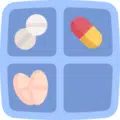Authors:
Amy Hu, PharmD
Kathleen Pincus, PharmD, BCPS, BCACP, CDCES
Reviewers:
Kelsey Norman, PharmD, BCCP, BCACP, BCPS
John Shilka, PharmD, BCPS, BCACP
Carrie Yu, PharmD
Citation: Butler J, Jones WS, Udell JA, et al. Empagliflozin after Acute Myocardial Infarction. N Eng J Med. 2024;390(16):1455-1466.
The Problem
Heart disease has killed more Americans since 1950 than any other health condition.1 Despite advances in the management of acute myocardial infarction (MI), up to 38% of patients will experience signs of heart failure (HF). Many will have a reduced left ventricular ejection fraction (LVEF), leading to increased mortality and, long-term, HF complications.2 Sodium-glucose cotransporter 2 (SGLT2) inhibitors have well-documented cardiovascular benefits and are indicated for the treatment of HF, chronic kidney disease (CKD), and type 2 diabetes mellitus (T2DM).3,4 However, data regarding their usefulness after an acute MI are limited.



 iForumRx.org is a web-based community of practice designed to inform ambulatory care pharmacy specialists, pharmacy residents, and student pharmacists about high-quality, practice-changing evidence.
iForumRx.org is a web-based community of practice designed to inform ambulatory care pharmacy specialists, pharmacy residents, and student pharmacists about high-quality, practice-changing evidence.